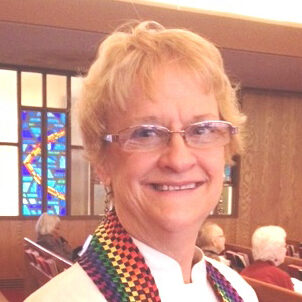Choose Your Story
The story you tell about your experience as a victim can be your prison. But creating a new story, based on the same facts, can be the key to escaping it.
None of us likes feeling trapped or imprisoned, so why would we create a story that locks us in?
Forgiveness expert Dr. Fred Luskin1 has a term for the tale that confines us: “grievance story.” Grievances are formed, he says, when people are unable to deal with what they wanted, and they end up renting too much space in their minds to the injustice they have endured.
“Wanting” is no trivial matter, though, when it comes to experiences of abuse, betrayal, or violence. Grievance stories can apply to a whole host of situations, from the ridiculous to the horrendous, even to mass acts of evil. Disappointment, anger or rage might naturally arise when your loved one ends your relationship, or a business partner cheats you. Or when an unloving parent abuses or abandons you, a drunk driver kills your family, or a crazed gunman shoots your child. Or when violent perpetrators erupt on your streets or invade your home. Or when past war and atrocities refuse to leave your mind. Whatever the cause of your suffering is, grief or anger may be appropriate.
But a grievance story is another matter. “The grievance story is our tale of helplessness and frustration based on taking something too personally and blaming someone else for how we feel,” says Luskin.2 The story’s emphasis is on how we feel, not what the violator did. We blame them for our past, present, and ongoing feelings. Our grievance account also exaggerates the personal offense of the act. We hold the perpetrator to unenforceable rules, subconsciously thinking we can somehow control their actions or should have been able to prevent what they did.
Here are some quick questions to see if your tale might be a grievance story:3
1. Whenever you tell it, does it remind you of other painful things that have happened to you?
2. Have you told the story more than twice to the same person?
3. Do you replay the offending events more than twice a day in your mind?
4. Has the story stayed the same over time?
5. Do you look for people with similar problems to whom you can tell your story?
There are more questions you can ask, but these give the flavor of the test. Luskin has eleven such questions in all; if you answer Yes to five or more of them, he says, there’s a good chance you’re telling a grievance story.
If so, don’t lose hope. We can create a new story – one with positive intentions – as easily as we created the first, grievance one. This second kind of narration can help us understand what happened, in the larger context of what we can and cannot control in life. It allows us to say what those hurtful experiences mean to us, as we learn to view problems as challenges for us to overcome.
Choice is the key here. “We can choose either to remain stuck in the pain and frustration of the past,” says Luskin, “or to move on to the potential of the future. It is a choice we can all make.”4
But there’s no easy transition between the two: to quit putting the responsibility for our well-being on the one who did us wrong. This is not about trivializing the act or denying its potentially devastating impact. It is about deciding to live past the violation. It tells yourself and others that you have been hurt but declares that you intend to move on. You will never forget, but you might forgive – for your sake, not for the offender’s.
There is a critical difference between the two story versions. Over time and with a lot of work and practice, you can tell a story of positive intention instead of being locked into a cycle of never-ending pain.
Easy to say; hard to do – but worth it in the end.
Betsy Schwarzentraub
1 – Dr. Fred Luskin is Director and Co-founder of the Stanford University Forgiveness Project. In his book, Forgive for Good: A Proven Prescription for Health and Happiness, he unlocks the usual connection between the concept of forgiveness and psychology or religion. Instead, he bases his practice on science, health, and medicine, providing a four-stage process for healing.
2 – Fred Luskin, Forgive for Good: A Proven Prescription for Health and Happiness, p. 39.
3 – Ibid, p. 37.
4 – Ibid, p. 217.


